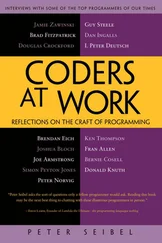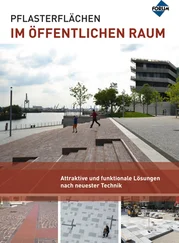Peter Siebel - Practical Common Lisp
Здесь есть возможность читать онлайн «Peter Siebel - Practical Common Lisp» весь текст электронной книги совершенно бесплатно (целиком полную версию без сокращений). В некоторых случаях можно слушать аудио, скачать через торрент в формате fb2 и присутствует краткое содержание. Год выпуска: 2005, ISBN: 2005, Издательство: Apress, Жанр: Программирование, на английском языке. Описание произведения, (предисловие) а так же отзывы посетителей доступны на портале библиотеки ЛибКат.
- Название:Practical Common Lisp
- Автор:
- Издательство:Apress
- Жанр:
- Год:2005
- ISBN:1-59059-239-5
- Рейтинг книги:4 / 5. Голосов: 1
-
Избранное:Добавить в избранное
- Отзывы:
-
Ваша оценка:
- 80
- 1
- 2
- 3
- 4
- 5
Practical Common Lisp: краткое содержание, описание и аннотация
Предлагаем к чтению аннотацию, описание, краткое содержание или предисловие (зависит от того, что написал сам автор книги «Practical Common Lisp»). Если вы не нашли необходимую информацию о книге — напишите в комментариях, мы постараемся отыскать её.
Practical Common Lisp — читать онлайн бесплатно полную книгу (весь текст) целиком
Ниже представлен текст книги, разбитый по страницам. Система сохранения места последней прочитанной страницы, позволяет с удобством читать онлайн бесплатно книгу «Practical Common Lisp», без необходимости каждый раз заново искать на чём Вы остановились. Поставьте закладку, и сможете в любой момент перейти на страницу, на которой закончили чтение.
Интервал:
Закладка:
1. Introduction: Why Lisp?
If you think the greatest pleasure in programming comes from getting a lot done with code that simply and clearly expresses your intention, then programming in Common Lisp is likely to be about the most fun you can have with a computer. You'll get more done, faster, using it than you would using pretty much any other language.
That's a bold claim. Can I justify it? Not in a just a few pages in this chapter—you're going to have to learn some Lisp and see for yourself—thus the rest of this book. For now, let me start with some anecdotal evidence, the story of my own road to Lisp. Then, in the next section, I'll explain the payoff I think you'll get from learning Common Lisp.
I'm one of what must be a fairly small number of second-generation Lisp hackers. My father got his start in computers writing an operating system in assembly for the machine he used to gather data for his doctoral dissertation in physics. After running computer systems at various physics labs, by the 1980s he had left physics altogether and was working at a large pharmaceutical company. That company had a project under way to develop software to model production processes in its chemical plants—if you increase the size of this vessel, how does it affect annual production? The original team, writing in FORTRAN, had burned through half the money and almost all the time allotted to the project with nothing to show for their efforts. This being the 1980s and the middle of the artificial intelligence (AI) boom, Lisp was in the air. So my dad—at that point not a Lisper—went to Carnegie Mellon University (CMU) to talk to some of the folks working on what was to become Common Lisp about whether Lisp might be a good language for this project.
The CMU folks showed him some demos of stuff they were working on, and he was convinced. He in turn convinced his bosses to let his team take over the failing project and do it in Lisp. A year later, and using only what was left of the original budget, his team delivered a working application with features that the original team had given up any hope of delivering. My dad credits his team's success to their decision to use Lisp.
Now, that's just one anecdote. And maybe my dad is wrong about why they succeeded. Or maybe Lisp was better only in comparison to other languages of the day. These days we have lots of fancy new languages, many of which have incorporated features from Lisp. Am I really saying Lisp can offer you the same benefits today as it offered my dad in the 1980s? Read on.
Despite my father's best efforts, I didn't learn any Lisp in high school. After a college career that didn't involve much programming in any language, I was seduced by the Web and back into computers. I worked first in Perl, learning enough to be dangerous while building an online discussion forum for Mother Jones magazine's Web site and then moving to a Web shop, Organic Online, where I worked on big—for the time—Web sites such as the one Nike put up during the 1996 Olympics. Later I moved onto Java as an early developer at WebLogic, now part of BEA. After WebLogic, I joined another startup where I was the lead programmer on a team building a transactional messaging system in Java. Along the way, my general interest in programming languages led me to explore such mainstream languages as C, C++, and Python, as well as less well-known ones such as Smalltalk, Eiffel, and Beta.
So I knew two languages inside and out and was familiar with another half dozen. Eventually, however, I realized my interest in programming languages was really rooted in the idea planted by my father's tales of Lisp—that different languages really are different, and that, despite the formal Turing equivalence of all programming languages, you really can get more done more quickly in some languages than others and have more fun doing it. Yet, ironically, I had never spent that much time with Lisp itself. So, I started doing some Lisp hacking in my free time. And whenever I did, it was exhilarating how quickly I was able to go from idea to working code.
For example, one vacation, having a week or so to hack Lisp, I decided to try writing a version of a program—a system for breeding genetic algorithms to play the game of Go—that I had written early in my career as a Java programmer. Even handicapped by my then rudimentary knowledge of Common Lisp and having to look up even basic functions, it still felt more productive than it would have been to rewrite the same program in Java, even with several extra years of Java experience acquired since writing the first version.
A similar experiment led to the library I'll discuss in Chapter 24. Early in my time at WebLogic I had written a library, in Java, for taking apart Java class files. It worked, but the code was a bit of a mess and hard to modify or extend. I had tried several times, over the years, to rewrite that library, thinking that with my ever-improving Java chops I'd find some way to do it that didn't bog down in piles of duplicated code. I never found a way. But when I tried to do it in Common Lisp, it took me only two days, and I ended up not only with a Java class file parser but with a general-purpose library for taking apart any kind of binary file. You'll see how that library works in Chapter 24 and use it in Chapter 25 to write a parser for the ID3 tags embedded in MP3 files.
Why Lisp?
It's hard, in only a few pages of an introductory chapter, to explain why users of a language like it, and it's even harder to make the case for why you should invest your time in learning a certain language. Personal history only gets us so far. Perhaps I like Lisp because of some quirk in the way my brain is wired. It could even be genetic, since my dad has it too. So before you dive into learning Lisp, it's reasonable to want to know what the payoff is going to be.
For some languages, the payoff is relatively obvious. For instance, if you want to write low-level code on Unix, you should learn C. Or if you want to write certain kinds of cross-platform applications, you should learn Java. And any of a number companies still use a lot of C++, so if you want to get a job at one of them, you should learn C++.
For most languages, however, the payoff isn't so easily categorized; it has to do with subjective criteria such as how it feels to use the language. Perl advocates like to say that Perl "makes easy things easy and hard things possible" and revel in the fact that, as the Perl motto has it, "There's more than one way to do it." [1] Perl is also worth learning as "the duct tape of the Internet."
Python's fans, on the other hand, think Python is clean and simple and think Python code is easier to understand because, as their motto says, "There's only one way to do it."
So, why Common Lisp? There's no immediately obvious payoff for adopting Common Lisp the way there is for C, Java, and C++ (unless, of course, you happen to own a Lisp Machine). The benefits of using Lisp have much more to do with the experience of using it. I'll spend the rest of this book showing you the specific features of Common Lisp and how to use them so you can see for yourself what it's like. For now I'll try to give you a sense of Lisp's philosophy.
The nearest thing Common Lisp has to a motto is the koan-like description, "the programmable programming language." While cryptic, that description gets at the root of the biggest advantage Common Lisp still has over other languages. More than any other language, Common Lisp follows the philosophy that what's good for the language's designer is good for the language's users. Thus, when you're programming in Common Lisp, you almost never find yourself wishing the language supported some feature that would make your program easier to write, because, as you'll see throughout this book, you can just add the feature yourself.
Читать дальшеИнтервал:
Закладка:
Похожие книги на «Practical Common Lisp»
Представляем Вашему вниманию похожие книги на «Practical Common Lisp» списком для выбора. Мы отобрали схожую по названию и смыслу литературу в надежде предоставить читателям больше вариантов отыскать новые, интересные, ещё непрочитанные произведения.
Обсуждение, отзывы о книге «Practical Common Lisp» и просто собственные мнения читателей. Оставьте ваши комментарии, напишите, что Вы думаете о произведении, его смысле или главных героях. Укажите что конкретно понравилось, а что нет, и почему Вы так считаете.








